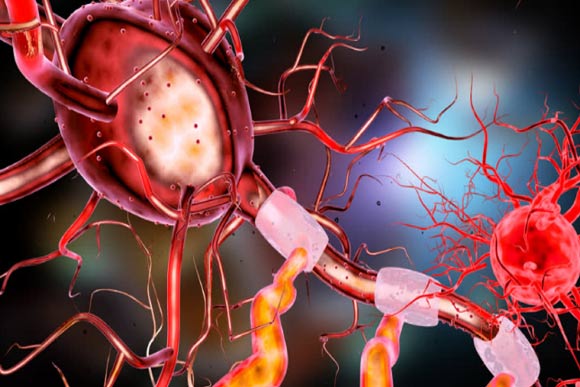A team of researchers from Duke and Rockefeller Universities has found that individual neurons can encode information about multiple stimuli simultaneously, much the same way electronics like cell phones sort signals by frequency. The findings appear in the journal Nature Communications.

In an experiment examining how monkeys respond to sound, Caruso et al found that a single neuron can encode information from two different sounds by switching between the signal associated with one sound and the signal associated with the other sound. Image credit: Irfan Ullah.
“The question we asked is, how do neurons preserve information about two different stimuli in the world at one time? We found that there are periods of time when a given neuron responds to one stimulus, and other periods of time where it responds to the other. They seem to be able to alternate between each one,” said Duke University’s Professor Jennifer Groh, co-lead author of the study.
To make the discovery, Professor Groh and colleagues developed and applied several new methods of analysis to their experimental data.
Most studies of single neuron behavior investigate only one stimulus at a time, looking at how an individual neuron responds when the subject is played a single note or shown a single image.
But reality is rarely so simple. Our brains are capable of processing multiple stimuli at once — such as listening to a friend at a party with music playing in the background, or picking out the buzz of a cicada from a symphony of trilling insects.
“It is not obvious how you go from single neurons encoding single objects, to neurons encoding multiple objects. We wanted to provide an intermediate step, looking at how neurons encode small groups of objects,” said study first author Dr. Valeria Caruso, a scientist at Duke University.
To complicate matters, single-neuron studies have shown that many sensory neurons are broadly tuned, meaning each is capable of responding to sounds at a range of different frequencies. For example, the same neurons triggered by your friend’s voice may also be triggered by the notes of your favorite tunes.
In the experiment, the team sat monkeys in a darkened room and trained them to look in the direction of sounds that they heard.
The authors played either one sound or two sounds, with each sound at a different frequency and coming from different locations.
When they played two sounds together, the monkeys looked first in the direction of one sound, and then in the direction of the other sound, indicating that the monkeys recognized the existence of two distinct sounds.
To find out how the monkeys’ brains encoded both sounds simultaneously, the scientists used electrodes in the inferior colliculus, a key point in the brain’s auditory pathway, to measure the small spikes in the local electric field caused by neurons firing.
They investigated the response of single neurons to both individual sounds and to combined sounds.
“The standard practice in the field is to count how many spikes occur over a period of time and compute the average of a number of trials. But this method obscures any fluctuations in activity that might indicate the neurons are switching back and forth between different stimuli,” Professor Groh said.
The researchers applied a combination of advanced statistical methods, including a new method called a Dynamic Admixture Point Process model, to extract more detailed patterns from the data.
They found that a single neuron could respond to one sound with one firing rate, and a second sound with a different firing rate.
When both sounds were played simultaneously, it appeared to fluctuate between the two firing rates.
Sometimes the fluctuations were fast enough that the neurons switched within a half second of the presentation of the sound, and in other cases the switching was slower.
The findings provide clues to other circumstances where the brain has to do more than one thing at a time with a limited set of neurons.
For example, our working memory — the number of things we can hold in our minds at one time — is constrained to around five to seven items.
While these experiments do not directly test working memory, the scientists think further studies may help explain these restrictions.
“Our working memory system is quite limited and no one really knows why,” Professor Groh said.
“Perhaps that limit arises from some kind of cycling behavior where you are coding one thing at a time, and across a period of time, the number of things you can represent depends on how long you need to represent each one and how rapidly you can switch.”
_____
Valeria C. Caruso et al. 2018. Single neurons may encode simultaneous stimuli by switching between activity patterns. Nature Communications 9, article number: 2715; doi: 10.1038/s41467-018-05121-8







